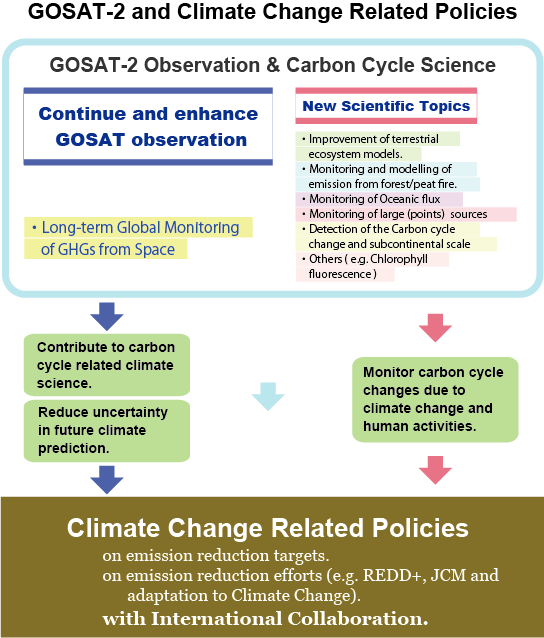![]() Mission
Mission
The increase of the atmospheric concentration of greenhouse gases such as carbon dioxide (CO2) and methane (CH4) is thought to be one of the major factors affecting the earth's climate and various activities to monitor concentrations of these gases have been conducted in many countries. However, the geographical inhomogeneity and lack of greenhouse gas measurement stations are ongoing cause of the large uncertainty in the estimated fluxes of these gases.
GOSAT (Greenhouse gases Observing SATellite) is a Japanese satellite dedicated to greenhouse gas measurement from space, launched in January 2009, and which has been obtaining global CO2 and CH4 concentration data for more than eight years. Many scientists from more than 20 countries are using GOSAT data in their research and publish their original results to science communities.
GOSAT-2 (Greenhouse gases Observing SATellite 2) is a successor to GOSAT and was launched on October 29, 2018 with a design lifetime of 5 years.
The missions of GOSAT-2 are:

Updated: February 27, 2017